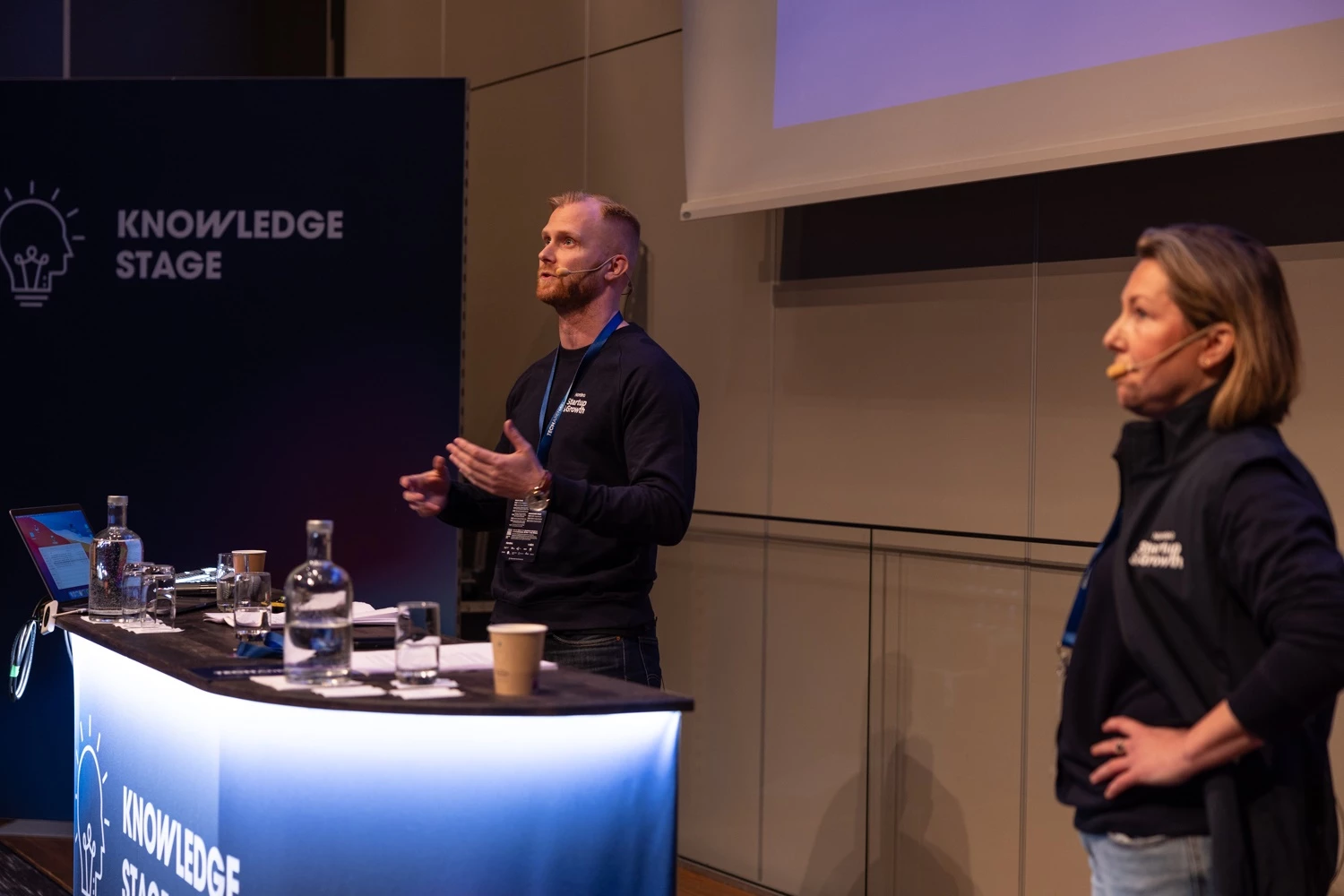Market Outlook - key take aways
- See debt financing as a complement to equity for your growth journey.
- Valuation is not facts, it is an art.
- 2023 is the year to focus, build smarter for the future.
The start-up and scale-up ecosystem is challenged, affecting the companies strategies and growth. For entrepreneurs, being aware of the financing trends and having a capital strategy is key for success. Nordea shared the market outlook on financing at Techarenan Summit, an event to spur entrepreneurs and innovation.

The market environment for tech companies has changed drastically: an unstable macro environment with stressed supply chains, high inflation and increasing interest rates. This has increased the need for cost control and a capital strategy.
- Profitability is on everyone’s mind and many entrepreneurs are slicing costs as we speak. But is it also very important to be aware of the financing trends, the challenges they pose, but more importantly the opportunities, says Kim Larsson Nyheim, Head of Startup & Growth Sweden at Nordea.
It is also very important to be aware of the financing trends, the challenges they pose, but more importantly the opportunities.
The overarching theme is “do more with less”, both when it comes to financing, people and other resources.
With more reluctant investors and a shift in focus towards profitability, debt financing has become a viable option. And debt financing no doubt comes with benefits such as reducing the need for dilution, but also entails obligations as your cash flow needs to cover the debt until you show profitability.
Normally, a bank would require three to five years’ history with black figures. Nordea Startup & Growth however has the mandate to help fast growing software companies who may not be on top of their cash flow right now, but who expect it to turn positive within 24 months.
- We can support companies with debt financing at an earlier stage than most banks. And in addition, we focus on more forward-looking metrics such as customer churn, customer acquisition cost and customer lifetime value, says growth banker Maria Smith from Nordea Startup & Growth Sweden.
We focus on more forward-looking metrics such as customer churn, customer acquisition cost and customer lifetime value. growth banker Maria Smith from Nordea Startup & Growth Sweden.
Kim Larsson Nyheim also adds that a more common product in the market right now is convertible loans. Interest in convertible loans has increase in parallel with investors and owners being more reluctant to add more capital. Also important to remember that a mandatory convertible can be calculated as equity.
Due to the current market situation investors focus more on existing portfolios and are more cautious about adding capital, which has prolonged the fundraising process. Having said that, this will differ between investors.
- Angel investors might be more cautious as they often are more exposed to the stock market while venture capitalists tend to invest more in unlisted companies, says Kim Larsson Nyheim.
However, there is still capital available, but investors and entrepreneurs need to agree on fair valuations. And a valuation is not just about the facts, it is actually an artform. It is a healthy sign that entrepreneurs and investors come closer in their valuations but Kim Larsson Nyheim would also like to stress that sometimes it is important for entrepreneurs to be confident enough to stick with their valuations.
- If you continuously lower your valuation, it might give rise to mistrust with new investors. Confidence is key.
If you continuously lower your valuation, it might give rise to mistrust with new investors. Confidence is key.
As an entrepreneur it is also important to keep tabs on the venture capitalist (VC) market. According to Kim Larsson Nyheim, there are indications that we may see a consolidation among VCs in the next few years.
- Larger players that I have spoken to agree that there are currently many VC firms, and that capital will be allocated to fewer VC firms going forward: the more established and mature ones, and the ones that have embraced AI and data.
Despite the challenging times, there is still a strong trend for start-ups and scale-ups – and many have managed to shift focus.
- Some companies struggle more than others in this environment, but most of them will still manage to achieve profitability this year. These companies have really proven their ability to shift from growth to profitability at an extraordinary pace, says Maria Smith.
Some sectors are not as affected by decreasing purchasing power as others: the impact in the B2B sector is not as strong as in the B2C sector. Companies with a Social Impact or Sustainability angle are also seen as attractive.
- Tech companies that contribute to solving the UNs 17 Sustainable Development Goals tend to attract more capital and also have an easier time protecting their valuations, continues Maria Smith.
Tech companies that contribute to solving the UNs 17 Sustainable Development Goals tend to attract more capital.
The favourable labour market in the tech sector also provides the opportunity to recruit competence at a lower cost today than 1-2 years ago. Now is the time to build competence and strengthen teams.
- A competent CFO with growth expertise is for example key when scaling up . This is also very clearly communicated when we talk to investors, concludes Kim Larsson Nyheim.
Nordea Startup & Growth